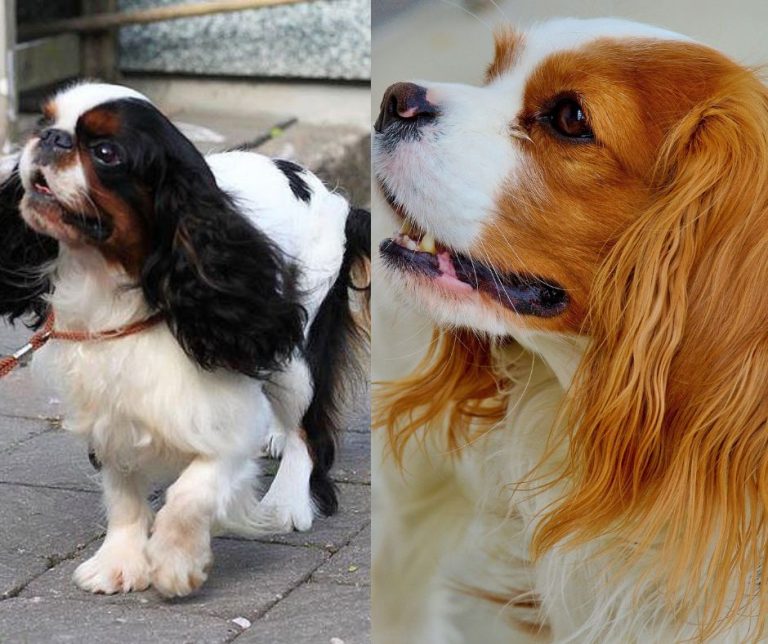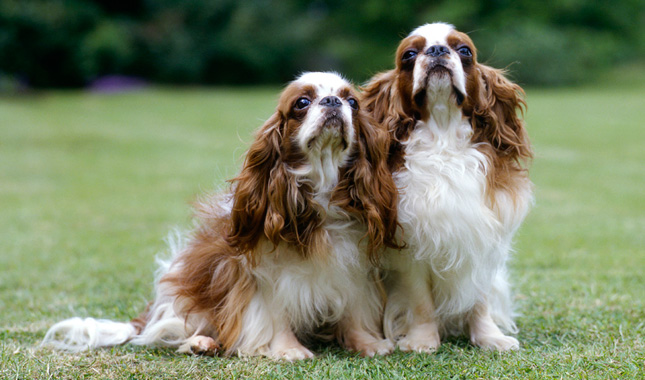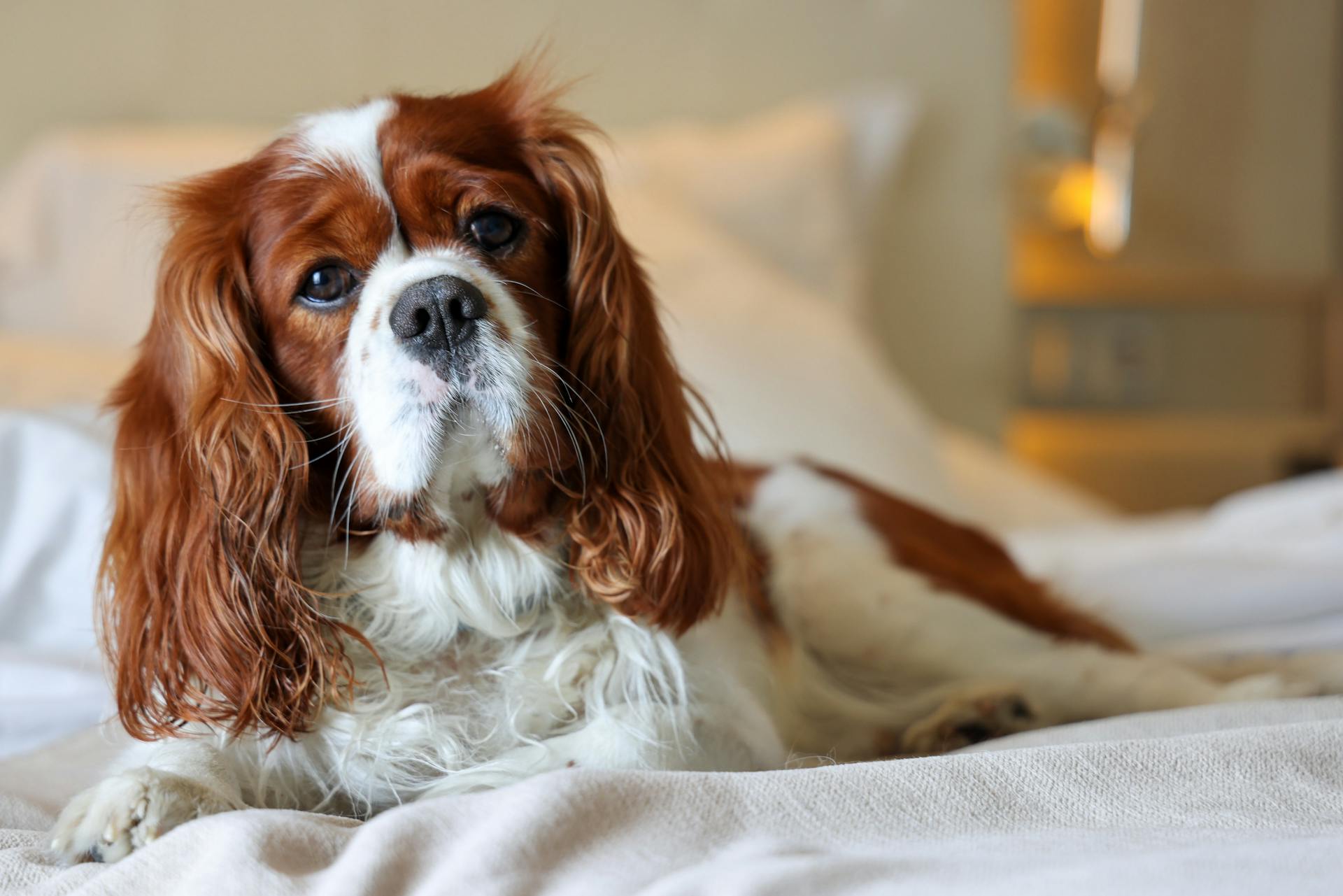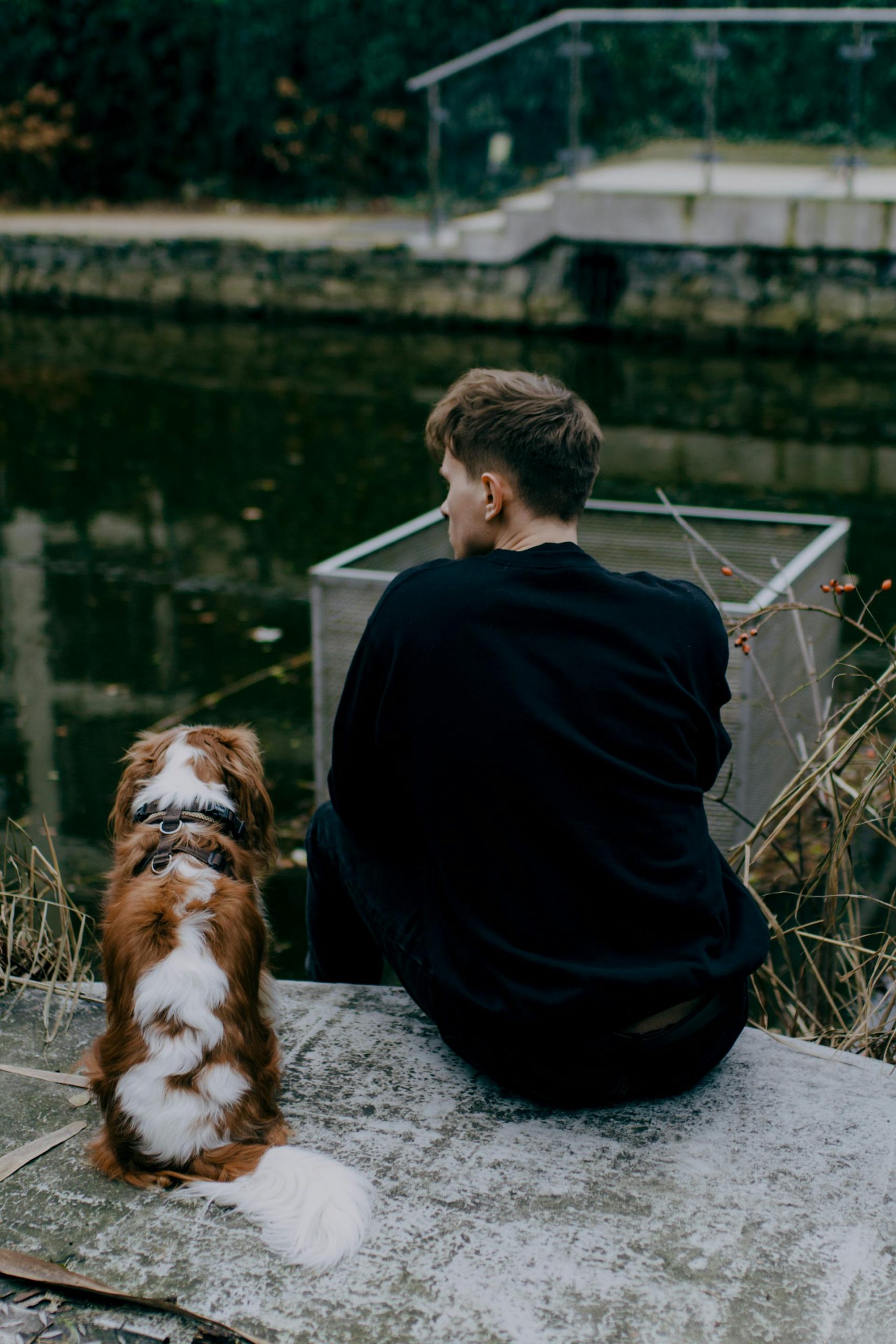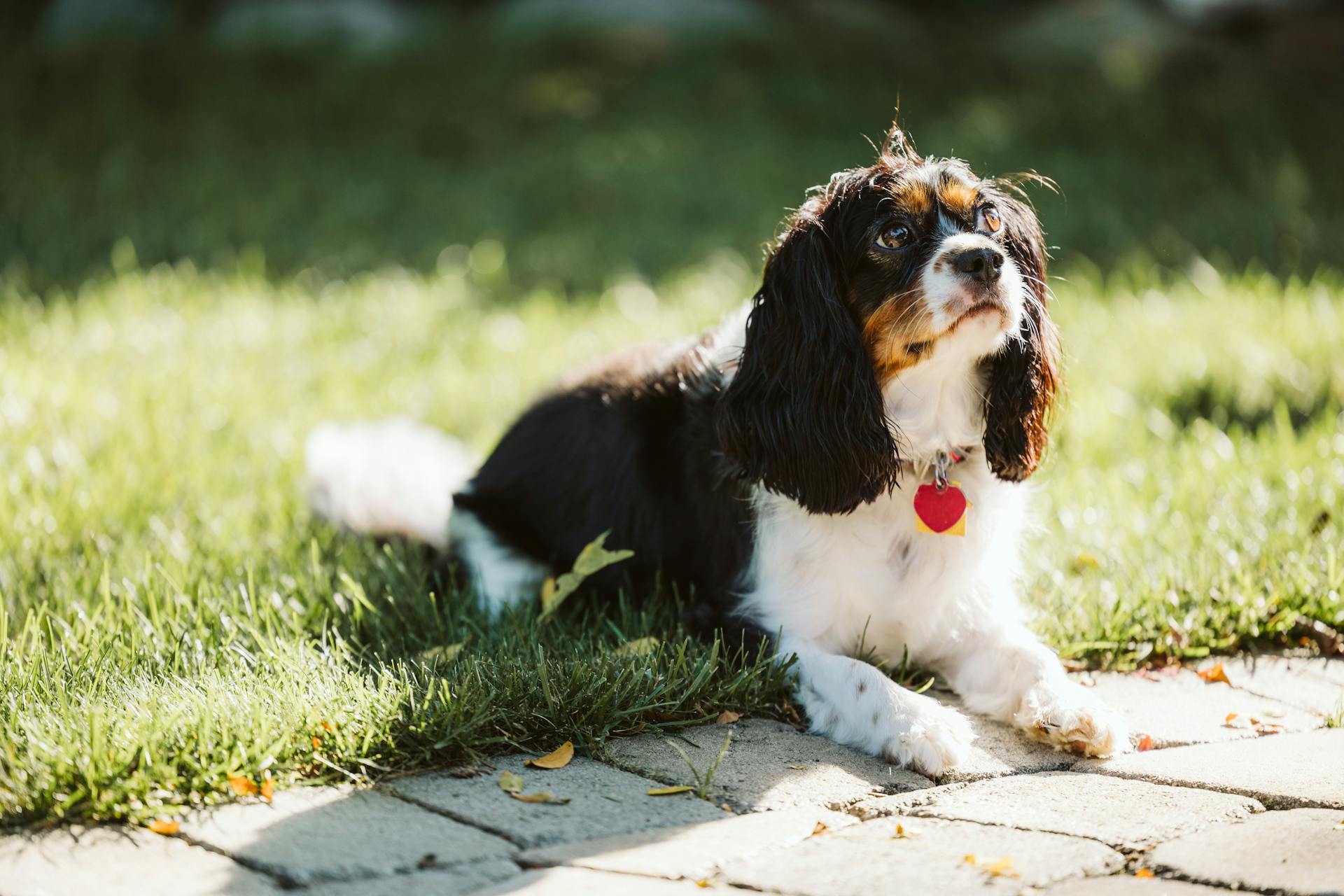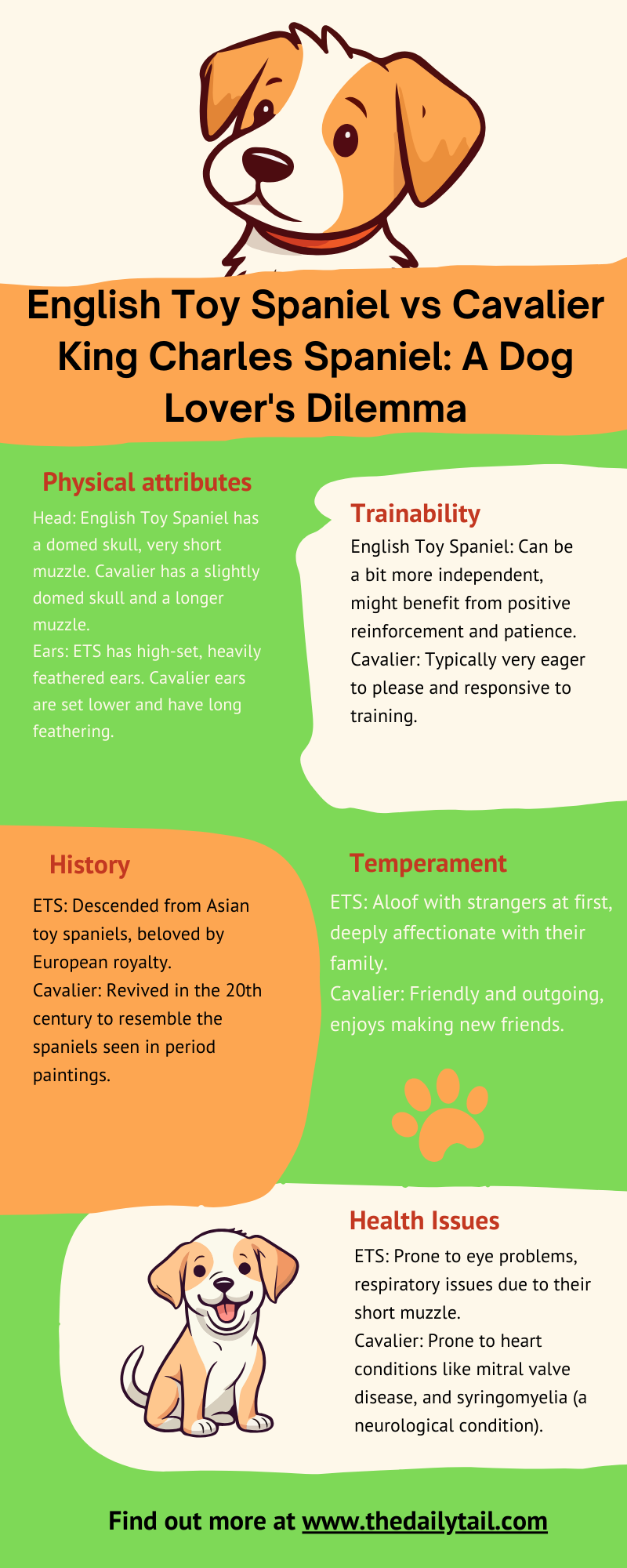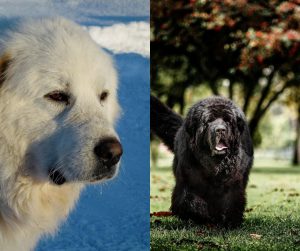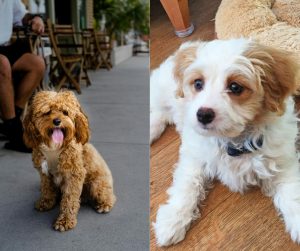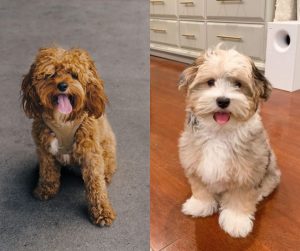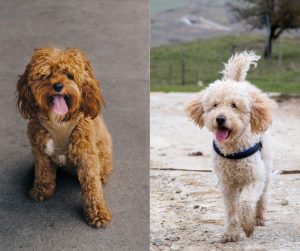As a lifelong dog lover, enthusiast, and owner, I’ve seen firsthand the subtle (and sometimes surprising!) differences between these two charming breeds. Want to know if you’re drawn to the Cavalier’s gentle spirit or the English Toy Spaniel’s regal air? Let’s dive in!
The English Toy Spaniel and the Cavalier King Charles Spaniel, both cherished for their companionship and endearing demeanor, hold an esteemed place in the toy breed category. They share a remarkable resemblance, which often leads to confusion, yet they are distinct breeds with differing characteristics. The English Toy Spaniel, historically known as the King Charles Spaniel, boasts a rich heritage and was a favored breed among British nobility, featuring prominently in art and culture of the period.
On the other hand, the Cavalier King Charles Spaniel is a more recent breed, developed in the 20th century to resemble the earlier spaniels of the Renaissance era. It is slightly larger than its counterpart, with the Cavalier King Charles Spaniel typically standing 12 to 13 inches in height and weighing between 15 to 20 pounds. They feature a longer muzzle, and their temperament is noted for being affectionate, adaptable, and eager to please, making them highly trainable.
While the English Toy Spaniel is compact and squarely built, with less apparent length compared to its height, it is also known for its domed skull, expressive eyes, and overall regal appearance. They tend to be reserved but loving towards their families. As both breeds flourish under human companionship, they have grown in popularity, becoming prime candidates for those seeking a dedicated and affectionate pet.
Understanding the nuances of their physical traits, temperaments, and care requirements is crucial for prospective owners to ensure a perfect match.
Now let’s take a deep dive into the English Toy Spaniel vs Cavalier King Charles Spaniel comparison.
History and Origins
The lineage of the English Toy Spaniel and the Cavalier King Charles Spaniel is steeped in regal history and significant breed development, with each dog having deep roots in European royalty and distinct paths of evolution that have led them to become recognized breeds by kennel clubs. They are part of the similar lineage as the American Cocker Spaniel and English Cocker Spaniel.
Early Ancestry
Toy spaniels are thought to have made their way from Asia, potentially originating from breeds like the Japanese Chin, to Europe as early as the 16th century. Their presence in Great Britain solidified their association with nobility and set the stage for their evolving role within the realm of royalty.
Breed Development
The documented history of the English Toy Spaniel dog breed dates back to the 15th century, with these dogs originally courting the European elite. Recognition by the American Kennel Club (AKC) came in 1886. Over time, selective breeding for specific traits led to a clear distinction in appearance from their ancestors. In contrast, the Cavalier King Charles Spaniel, marked by a larger size and longer snout, remained more aligned with the original appearance of the breed.
Influence of Royalty
Royalty’s influence on these breeds is paramount. The King Charles Spaniel derived its name from King Charles II, whose affection for the breed was significant enough to inspire its association with the monarchy. Even earlier, during the troublesome reign of Charles I, these dogs were noted to be steadfast companions, reportedly at the side of the king at the time of his execution, underscoring the breed’s longstanding affiliation with British kings.
Breed Characteristics
In comparing the English Toy Spaniel vs Cavalier King Charles Spaniel, it’s essential to consider their distinct physical attributes, size, and breed standards, each of which contributes to their overall temperament and suitability for various homes.
Physical Attributes
English Toy Spaniel: This toy spaniel boasts a domed skull, with a face characterized by a short, turned-up muzzle. Its large, dark eyes exude expressiveness, while its long, furry ears frame the face. The breed’s silky coat is medium-length.
Cavalier King Charles Spaniel: The Cavalier King Charles Spaniel dog breed has a gently rounded head and a soft, yet distinct, stop (where the muzzle meets the forehead). Its eyes are round and warm, complemented by high-set ears. The Cavalier’s coat is longer than the English Toy Spaniel’s and comes in various coat colors, often with chestnut markings on a white background (Blenheim) or solid rich colors.
Size Comparison
| Feature | English Toy Spaniel | Cavalier King Charles Spaniel |
|---|---|---|
| Height at Withers | 10 inches (approx.) | 12-13 inches |
| Weight | 8-14 pounds | 13-18 pounds |
| Body Length | Slightly shorter than height | Slightly longer than height |
| Proportion | Compact, cobby, square frame | Balanced, well-proportioned |
Breed Standards
Breed Standard for English Toy Spaniel:
- Head: Large in comparison to the size of the dog, with a compressed skull
- Body: Short and compact with a level back
- Tail: Typically docked, set high and carried level with the back
- Energy Level: Low; minimal exercise requirements
Breed Standard for Cavalier King Charles Spaniel:
- Head: Proportionate to the body with a full muzzle and well-defined nose
- Body: Slightly longer than tall, with a smooth, graceful outline
- Tail: Carried happily but not much above the level of the back
- Energy Level: Moderate; daily walking and playtime needed
Both breeds, recognized for their toy spaniel nature, share similarities in personality, often described as affectionate and eager to please. They differ in their frame and bone structure as seen in the above comparisons, with the Cavalier typically presenting a slightly larger body size and a higher energy level, necessitating more exercise compared to the English Toy Spaniel.
Temperament and Personality
When comparing the English Toy Spaniel and the Cavalier King Charles Spaniel, both breeds exhibit affectionate and companionable dispositions suited for family life. However, nuances in their temperaments and social behaviors set them apart.
Behavioral Traits
English Toy Spaniel:
- Energy Levels: They typically display a more reserved energy level, but they still enjoy gentle play
- Intelligence: This breed possesses a moderate intelligence and is receptive to dog training, although they may not be as eager to please as other breeds
- Separation Anxiety: They can develop separation anxiety if left alone for extended periods due to their strong bond with their owners
Cavalier King Charles Spaniel:
- Energy Levels: They tend to have a higher energy level and enjoy more vigorous activity
- Intelligence: Known for their intelligence, they are generally easier to train and often excel in obedience
- Separation Anxiety: While being equally affectionate, Cavaliers may cope slightly better with separation but still prefer the company of their owners
Affection and Sociability
English Toy Spaniel:
- Affection Level: They are known for their loving nature and desire for companionship, often forming a close attachment to one person
- Social Behavior: This breed can be shy around strangers and requires early socialization to build confidence in various social situations
Cavalier King Charles Spaniel:
- Affection Level: Cavaliers are famous for their ‘gay temperament,’ displaying a joyful and friendly demeanor. They typically show high levels of affection to their families
- Social Behavior: They are generally more sociable with strangers and other animals, adapting quickly to new environments and people
In their roles as companion dogs, both the English Toy Spaniel and the Cavalier King Charles Spaniel shine with their respective temperaments and levels of affection. The English Toy may require a more patient training approach, while the Cavalier is often more playful and easier to train. Despite these differences, they both share a common trait: a loving and gay temperament that makes them cherished pets.
Health and Lifespan
When comparing the health and lifespan of the English Toy Spaniel and the Cavalier King Charles Spaniel, both breeds share certain breed-specific health challenges and care needs. Understanding these can help potential owners provide better care and may impact the longevity of these dogs.
Common Health Issues
English Toy Spaniel:
- Heart Conditions: They are prone to heart murmurs and congestive heart failure
- Eye Problems: Issues such as cataracts can occur in this breed
Cavalier King Charles Spaniel:
- Mitral Valve Disease (MVD): This heart condition is common and affects many Cavaliers at some point in their lifetime
- Syringomyelia (SM): A serious condition where cavities develop within the spinal cord near the brain
Care Requirements
English Toy Spaniel Care:
- Shedding: They possess a double coat that sheds moderately
- Grooming: Requires regular brushing to prevent matting; professional grooming every few months may be beneficial
Cavalier King Charles Spaniel Care:
- Life expectancy: On average, they live between 9 to 14 years, with proper care influencing longevity
- Grooming: They need daily to weekly brushing to maintain their coat and reduce shedding
Breed Varieties and Colors
The Cavalier King Charles Spaniel and the English Toy Spaniel both exhibit a rich variety of coat colors, although distinct in their breed standards. Each breed’s recognized palette contributes to its unique appearance.
Recognized Colors
Cavalier King Charles Spaniel:
- Blenheim: A rich chestnut on a pearly white background. The chestnut patches should be well divided and evenly spaced
- Tricolor: Black and white with tan markings over the eyes, on the cheeks, inside the ears, and beneath the tail
- Black and Tan: Jet black with tan markings over the eyes, on the cheeks, inside the ears, and beneath the tail
- Ruby: A solid, rich red with no white markings or tricolor tan
English Toy Spaniel:
- Blenheim: The color specifications are similar to that of the Cavalier—chestnut markings on a white background
- Prince Charles (Tricolor): White with black and tan markings
- King Charles: Black with tan markings, similar to the Cavalier’s Black and Tan, but with a distinction in the distribution of tan
- Ruby: A solid red, which might vary in shade but should be free from other colors
These color distinctions are a core element of their breed identity, with some variations like the presence of a “lozenge” or “Blaze” (a distinct thumb-shaped chestnut spot on the Blenheim’s forehead), particularly admired in Cavalier King Charles Spaniels.
Distinct Features
The coat of a Cavalier King Charles Spaniel is moderately long, silky, and may have slight waves. They possess feathering on their ears, chest, legs, and tail, which accentuates their regal stature. In contrast, the English Toy Spaniel has a shorter, dense coat with less feathering and a more cobby body. Each breed presents a distinctive silhouette that adheres to its breed standard’s ideal for color distribution and grooming requirements.
In conclusion, understanding the depth of breed varieties and their unique colors allows for greater appreciation of the Cavalier King Charles Spaniel and English Toy Spaniel, which are both steeped in history and beloved as companions.
Breed Popularity and Recognition
Within the canine community, breed popularity and recognition by kennel clubs often inform potential owners and breed enthusiasts about a breed’s standings. The American Kennel Club recognition and the support by breed-specific clubs contribute to these breeds’ participation in various dog shows.
Kennel Club Classifications
The American Kennel Club (AKC) classifies both the English Toy Spaniel and the Cavalier King Charles Spaniel within the Toy Group, recognizing them as distinct breeds with their own breed standards. The Cavalier King Charles Spaniel enjoys a higher popularity ranking compared to the English Toy Spaniel and has been fully recognized by the AKC since 1995. On the other hand, the English Toy Spaniel has been part of AKC’s recognized breeds for much longer but has a smaller following.
- American Kennel Club Rankings
- Cavalier King Charles Spaniel: Consistently ranks within the top 20 of the AKC’s most popular dog breeds
- English Toy Spaniel: Often ranks significantly lower, not as widely recognized by the general public
Breed Clubs and Shows
Breed Clubs like the Cavalier King Charles Spaniel Club, USA (CKCSC, USA) play a crucial role in maintaining breed standards and organizing events that advocate for the breed. These clubs often conduct breed-specific shows that allow for the assessment of the breeding stock by the established breed standard.
- Breed Shows:
- Cavaliers: Have a strong following with multiple regional clubs hosting events
- English Toy Spaniels: Have dedicated events but at a lesser frequency than the Cavaliers
Both breeds are showcased in AKC Recognized Breed Shows, where they compete within their respective classifications. The Cavalier King Charles Spaniel usually garners more interest at these events due to their higher popularity among pet owners and breed enthusiasts.
While the English Toy Spaniel might not share the spotlight to the same extent, they find a dedicated audience at shows that appreciate their unique characteristics. Both breeds benefit from their respective breed clubs’ activism which helps in preserving these breeds and educating the public about them.
Considerations for Prospective Owners
When choosing between an English Toy Spaniel and a Cavalier King Charles Spaniel, prospective owners should consider the financial commitment as well as the lifestyle fit each breed demands.
Cost Factors
Price: The initial cost for English Toy Spaniels and Cavalier King Charles Spaniels can vary significantly based on the breeder, geographical location, and pedigree of the puppy. Generally, prices can range from $1,000 to $2,500, though this may be higher for dogs with an exceptional lineage.
- Grooming: Both breeds require regular grooming, but due to their longer coats, Cavaliers may incur a higher cost
- Healthcare: Both breeds are prone to certain health issues; owners should budget for regular veterinary check-ups and potential treatments
| Expense Category | English Toy Spaniel | Cavalier King Charles Spaniel |
|---|---|---|
| Initial Price | $1,000 – $2,000 | $1,500 – $2,500 |
| Grooming | Moderate | High |
| Healthcare | Potential breed-specific costs | Potential breed-specific costs |
Living with the Breed
Temperament: English Toy Spaniels and Cavalier King Charles Spaniels both exhibit a playful and affectionate nature, which makes them excellent family pets. They are known for their loving disposition and enjoy being close to their owners.
- Energy and Exercise: Cavaliers generally have higher energy levels and require daily exercise to maintain good health. English Toy Spaniels, while still playful, have more moderate exercise needs
- Separation Anxiety: Both breeds may develop separation anxiety if left alone for extended periods, demanding an owner’s dedication to proper bonding and dog training sessions to mitigate this issue
Playfulness and Affection:
- English Toy Spaniels are gentle and can be somewhat reserved
- Cavaliers are often more outgoing and sociable with family members and strangers alike
Owners must be prepared to provide affection and play to keep their pets happy, particularly if choosing the more vivacious Cavalier. While both breeds adapt well to living environments, Cavaliers may be better suited for those with active lifestyles, whereas English Toy Spaniels can thrive in a quieter setting.
Comparative Analysis of Both Breeds
This section provides an in-depth comparison between the English Toy Spaniel and the Cavalier King Charles Spaniel, focusing on their distinct characteristics and assisting potential owners in making an informed choice.
Differences in Characteristics
The English Toy Spaniel and the Cavalier King Charles Spaniel, while sharing historical lineage, present notable differences in their physical and temperamental characteristics. The English Toy Spaniel, known for its compact and cobby build, resembles a living plush toy with a characteristically square body. In contrast, the Cavalier King Charles Spaniel possesses a well-balanced frame that, while maintaining a semblance to squareness, tends to be slightly longer than its height.
The coat of the Cavalier is silky, displaying a gentle wave, imparting a sense of elegance to its general appearance. The English Toy Spaniel’s coat, though equally silky, can appear more plush and contributes to its chubby visage. The faces of the English Toy Spaniel echo the breed’s Oriental short-nosed spaniel ancestry, with a notably shorter and more domed head compared to the Cavalier’s sporting spaniel heritage, which grants it a more moderate facial structure.
Table 1: Size Comparison
| Trait | English Toy Spaniel | Cavalier King Charles Spaniel |
|---|---|---|
| Body Shape | Square and cobby | Slightly longer than tall |
| Coat Texture | Plush and silky | Silky with gentle waves |
| Facial Structure | Short-nosed, domed head | Moderate snout, flatter skull |
Choosing Between the Two
When deciding between an English Toy Spaniel and a Cavalier King Charles Spaniel, prospective owners should consider their lifestyle and preferences. Individuals who appreciate a smaller, toy breed dog may lean towards the English Toy Spaniel for its compact size and Oriental charm. Those looking for a more active and affectionate companion might find the Cavalier King Charles Spaniel better suited for family life, given its inclination towards sporting activities and its reputation for being notably affectionate.
List of Considerations for Prospective Owners
- Space constraints: English Toy Spaniel’s compact size is ideal for smaller dwellings
- Family dynamics: Cavaliers are affectionate and integrate well with family members
- Activity level: Cavaliers may require more exercise owing to their sporting breed roots
Whether favoring the chubby and plush English Toy Spaniel or the elegant and affectionate Cavalier King Charles Spaniel, it is important to evaluate the differences and temperaments of both breeds to ensure the right fit for both the dog and its owner.
Caring for Your Spaniel
Caring for your Spaniel, whether it’s an English Toy Spaniel or a Cavalier King Charles Spaniel, requires understanding their grooming and exercise needs. Each breed comes with its own set of requirements to ensure it remains healthy and happy.
Grooming Needs
English Toy Spaniel
- Coat: They have a medium-length, double silky coat.
- Grooming Frequency: Regular grooming, at least once a week, is essential to prevent tangles and matting
- Trimming: Occasional trimming around the dog’s feet and bottom may be necessary
Cavalier King Charles Spaniel
- Coat: Their coat is also medium-length but tends to be a bit wavier than the English Toy Spaniel’s
- Grooming Frequency: They require brushing several times a week
- Trimming: Light trimming can help maintain their coat shape, paying particular attention to the feathering on the ears, legs, and tail
For both breeds, one should avoid any artificial alterations that change the natural appearance of the dog.
Exercise and Activity Levels
English Toy Spaniel
- Energy Level: They possess a moderate energy level
- Exercise Needs: A short walk or playtime each day is sufficient to meet their exercise needs
- Playfulness: They can be quite playful and enjoy interactive games that also provide mental stimulation
Cavalier King Charles Spaniel
- Energy Level: Slightly higher in energy than the English Toy Spaniel
- Exercise Needs: These dogs do well with longer walks and more frequent play sessions
- Playfulness: Cavaliers are very playful and enjoy being engaged in activities with their dog owners
For both breeds, daily exercise is crucial to keep them healthy and prevent behavior problems from emerging due to pent-up energy.
Breed-Specific Concerns
When comparing English Toy Spaniels and Cavalier King Charles Spaniel dog breeds, it is important to consider their unique genetic predispositions and the lifestyle adaptations that each breed may necessitate. Both breeds have characteristic concerns that prospective owners should be aware of to ensure the health and well-being of the dog.
Genetic Predispositions
English Toy Spaniel:
- Jaw abnormalities:
- They are prone to dental issues like an undershot bite, which is where the lower jaw extends beyond the upper jaw.
- Occurrences of wry mouth or crooked jaw can also be concerning, leading to challenges in eating and dental care.
- Lifespan: Generally, English Toy Spaniels have a lifespan of 10 to 12 years
Cavalier King Charles Spaniel:
- Behavioral traits:
- They may experience separation anxiety, showing distress and disruptive behavior when left alone due to their strong bond with owners
- Health issues: They are susceptible to certain heart conditions and lifespan averages 9 to 14 years
Lifestyle Adaptations
English Toy Spaniel:
- They thrive in a calm environment and require gentle handling due to their sensitive nature
Cavalier King Charles Spaniel:
- A Cavalier’s need for companionship should be accommodated to avoid separation anxiety
- Regular exercise and engagement are critical for maintaining their physical health and sociable behavior

